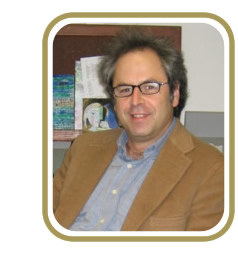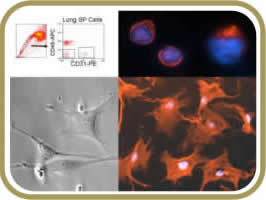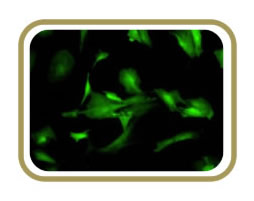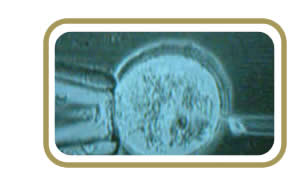Stem Cell Biology and Gene Therapy
Basic Science Research
Mission Statement:
 Directed by Dr. Alan Fine, MD, the Stem Cell Biology Program at the Boston University Pulmonary Center consists of a team of basic scientists and pulmonologists who conduct state-of-the-art research focused on the characterization and biology of lung stem cells in the adult and embryonic mouse lung. The long- term objectives of our work are to develop cell-based therapies to regenerate lung tissue after injury, and to clarify the aberrant roles of stem cells in the pathogenesis of lung disease. Our research program also interacts with other research programs on campus affiliated with the Boston University Center for Regenerative Medicine (CReM).
Directed by Dr. Alan Fine, MD, the Stem Cell Biology Program at the Boston University Pulmonary Center consists of a team of basic scientists and pulmonologists who conduct state-of-the-art research focused on the characterization and biology of lung stem cells in the adult and embryonic mouse lung. The long- term objectives of our work are to develop cell-based therapies to regenerate lung tissue after injury, and to clarify the aberrant roles of stem cells in the pathogenesis of lung disease. Our research program also interacts with other research programs on campus affiliated with the Boston University Center for Regenerative Medicine (CReM).
Background and Interests:
 The Stem Cell Biology Program of the Pulmonary Center focuses on identifying stem cell populations that are involved in, or have the capacity to assume differentiated lung cell phenotypes. Our long-term goal is to develop novel cell based strategies for the reconstitution of diseased lung tissue. Currently, we are focused on isolating and identifying stem cells from the lung during development and in the adult. A significant challenge for this type of work is the overall rarity of stem cells. In some tissues, these cells may be present at a frequency of 1:10,000-10,000,000 cells. In view of this, one central focus of our work is the development of novel techniques to purify these very rare cells from tissues and to use selective lineage tracing studies to study their fates. Through these studies, we hope to establish these cells’ roles in the biology of lung development and tissue homeostasis.
The Stem Cell Biology Program of the Pulmonary Center focuses on identifying stem cell populations that are involved in, or have the capacity to assume differentiated lung cell phenotypes. Our long-term goal is to develop novel cell based strategies for the reconstitution of diseased lung tissue. Currently, we are focused on isolating and identifying stem cells from the lung during development and in the adult. A significant challenge for this type of work is the overall rarity of stem cells. In some tissues, these cells may be present at a frequency of 1:10,000-10,000,000 cells. In view of this, one central focus of our work is the development of novel techniques to purify these very rare cells from tissues and to use selective lineage tracing studies to study their fates. Through these studies, we hope to establish these cells’ roles in the biology of lung development and tissue homeostasis.
Stem Cells in Development
A major interest of our group is on lung development. In this work, we seek to understand how the lung becomes organized and matures during gestation. This necessarily involves the study of lung stem cells and the pathways that control their fate. Areas of interest include the identification of airway stem cells and the signals controlling their differentiation, defining the contribution of the pleural mesothelium in lung development, and assessing the role of neural based signals in stem cell differentiation.
Reprogramming Somatic Cells:
 Somatic cells, such as skin fibroblasts, can be ‘reprogrammed’ toward a pluripotent state using four lentivirally-delivered transcription factors (Oct4, Klf4, Sox2, and c-myc). These so-called ‘induced pluripotent stem (iPS) cells’ generated through this method are nearly indistinguishable from embryonic stem cells and are genetically identical to the donor from which they are derived. This has raised the exciting possibility of employing iPS cells as autologous cell-based therapies or ex vivo experimental models for a variety of degenerative or inherited diseases. Investigators in our stem cell program are developing novel methods for the derivation and differentiation of iPS cells for future cell therapies designed to reconstitute damaged lung epithelial cells. Please click here to learn more about our iPS cell-related research, including our campus-wide iPS cell bank and vector core: www.bumc.bu.edu/stemcells/crm-core-facilities
Somatic cells, such as skin fibroblasts, can be ‘reprogrammed’ toward a pluripotent state using four lentivirally-delivered transcription factors (Oct4, Klf4, Sox2, and c-myc). These so-called ‘induced pluripotent stem (iPS) cells’ generated through this method are nearly indistinguishable from embryonic stem cells and are genetically identical to the donor from which they are derived. This has raised the exciting possibility of employing iPS cells as autologous cell-based therapies or ex vivo experimental models for a variety of degenerative or inherited diseases. Investigators in our stem cell program are developing novel methods for the derivation and differentiation of iPS cells for future cell therapies designed to reconstitute damaged lung epithelial cells. Please click here to learn more about our iPS cell-related research, including our campus-wide iPS cell bank and vector core: www.bumc.bu.edu/stemcells/crm-core-facilities
The stem and progenitor cell types currently studied in our program include:
- mesenchymal stem cells
- airway epithelial stem cells
- lung mesothelium
- embryonic stem (ES) cells
- induced pluripotent stem (iPS) cells
Principal Investigators:

- Alan Fine, MD, Professor
- Wellington Cardoso, MD, PhD, Professor
- Darrell N. Kotton, MD, Associate Professor
- Xinbin Ai, PhD
- Laertis Ikonomou, PhD
- Arun Guha, PhD
Selected Publications:
- Paez, J., Ghosh, S., Boppiddi, K., Ai, X., Cardoso, W., and Fine A. Cell Activation Dynamics and Signaling Properties of Notch3 Receptor in the Developing Pulmonary Artery. Journal of Biological Chemistry 286:22678-22687, 2011.
- Fine, A. Breathing Life into the Lung Stem Cell Field. Cell Stem Cell 4:468-469, 2009.
- Tsao PN, Vasconcelos M, Izvolsky KI, Qian J, Lu J, Cardoso WV. Notch signaling controls the balance of ciliated and secretory cell fates in developing airways. Development 136: 2297-2307, 2009.
- Langsdorf A., Radzikinas K., Kroten A., Jain S., Ai X. Neural crest cell origin and signals for intrinsic neurogenesis in the mammalian respiratory tract. American. Journal Respiratory. Cell Molecular Biology 44:293-301, 2011.
- Christodoulou, C., Longmire, T.A., Shen, S.S., Bourdern A., Sommer, C., Gadue, P., Spira, A., goun-Evans, V., Murphy, G.J., Mostoslavsky, G. and Kotton, D. Mouse ES cells and iPS cells can form similar definitive endoderm despite differences in imprinted genes. Journal Clinical Investigation 121:2313-2325, 2011.